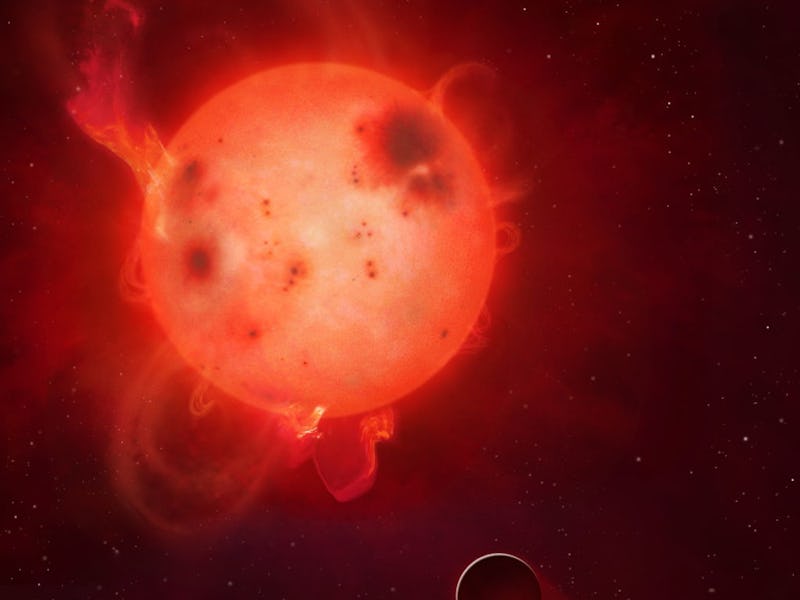Earth-Like Exoplanet Kepler-438b Is Barren Because Its Star Is a Death God
What does the fate of a very distant cousin say about our planet?

About 470 light years away, a rocky planet about 1.12 times the size of Earth spins around a star in what’s called a habitable zone — where favorable temperatures mean liquid water could possibly exist. It’s called Kepler-438b and it’s the most Earth-like exoplanet astronomers have discovered to date, a place of profound interest for seekers of extraterrestrial life. Well, it was anyway.
Scientists at the University of Warwick are dashing hopes. They’ve announced that Kepler-438b is more irradiated than Godzilla’s insides.
Turns out that the star that Kepler-438b is orbiting — conveniently named Kepler-438 — is a red dwarf with a bit of temper. Every few hundred days, Kepler-438 starts to spew out strong explosions called superflares 10 times more powerful than anything our own sun has ever produced, and equivalent to about 100 billion megatons of TNT.
Though these superflares are bad news, they’re probably not the reason the exoplanet is a nuclear wasteland. More likely, the place has half-life instead of actual life because superflares go hand-in-hand with something called coronal mass ejections, which are powerful enough to strip off the planet’s atmosphere and turn it into an uninhabitable mess.
Our own Earth is hit by solar winds emitted from the Sun. Thankfully, we have a sweet magnetic field that pushes these high-energy particles out of the way and keeps us cool and cozy. Either Kepler-438b lacks a magnetic field, or the flares it’s subjected to are so powerful they’re basically overwhelming the magnetosphere like Gronkowski against humanity.
As the coronal mass ejections basically rip off the exoplanet’s atmosphere, the surface — and potential life — hit a full dose of sterilizing ultraviolet and x-ray radiation.
What’s happened to Kepler-438b isn’t so different to what’s currently happening to Mars, where the atmosphere is being stripped away by solar winds. The only real difference is that the red planet lost its magnetic field many billion years ago for reasons unknown.
The more pertinent question is whether something like that could happen to Earth. Our own star is on a different evolutionary path than the Kepler-438, so it won’t turn into a red dwarf of death and start flinging coronal mass ejections our way. (It will cool off and expand into a red giant that consumes Earth. Yay!) Regardless, Earth might still lose its magnetic field at some point, and that might pave the way for it to become an atmosphere-less, lifeless rock.
Pro tip: Never try to live on a planet that doesn’t have a decent magnetic field.